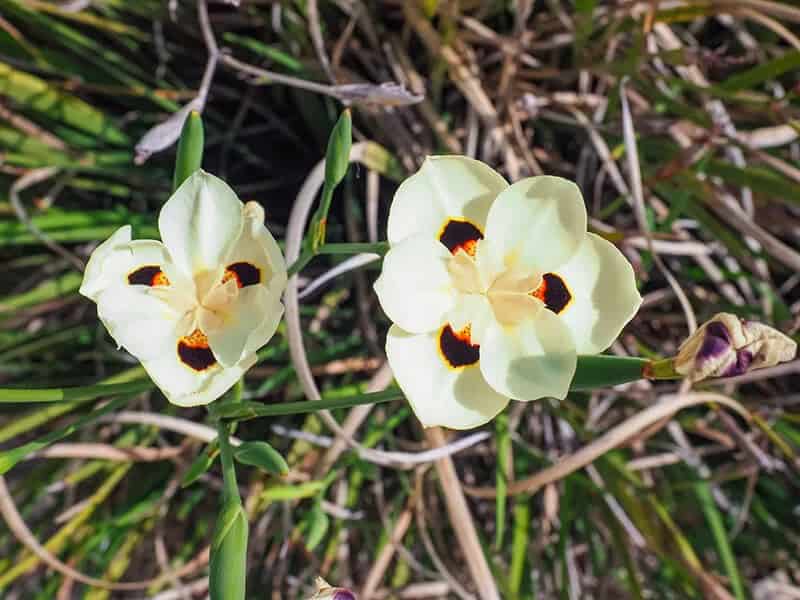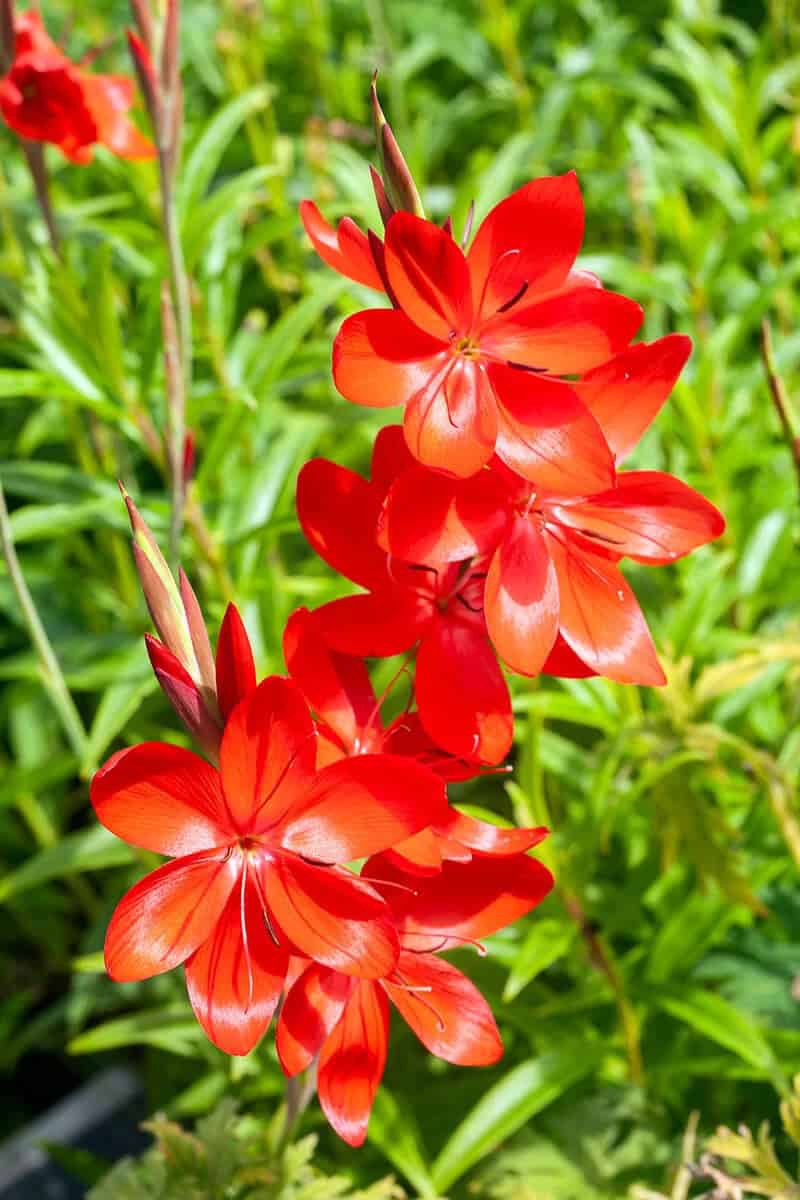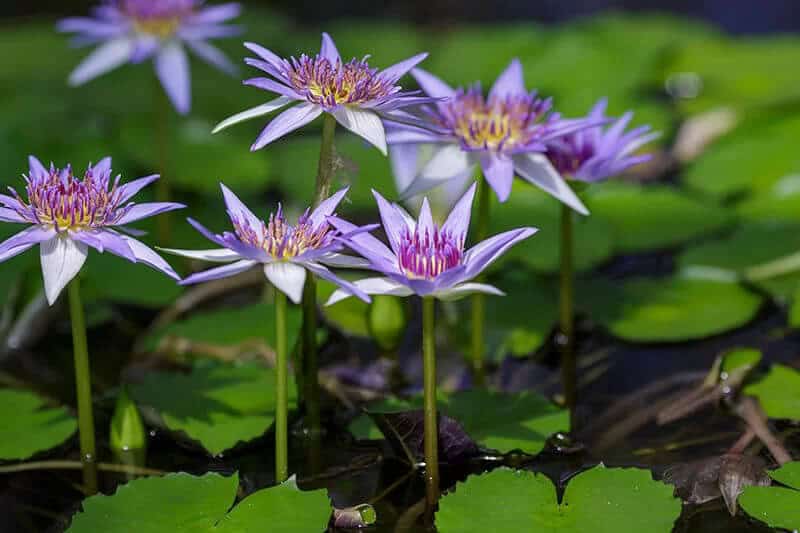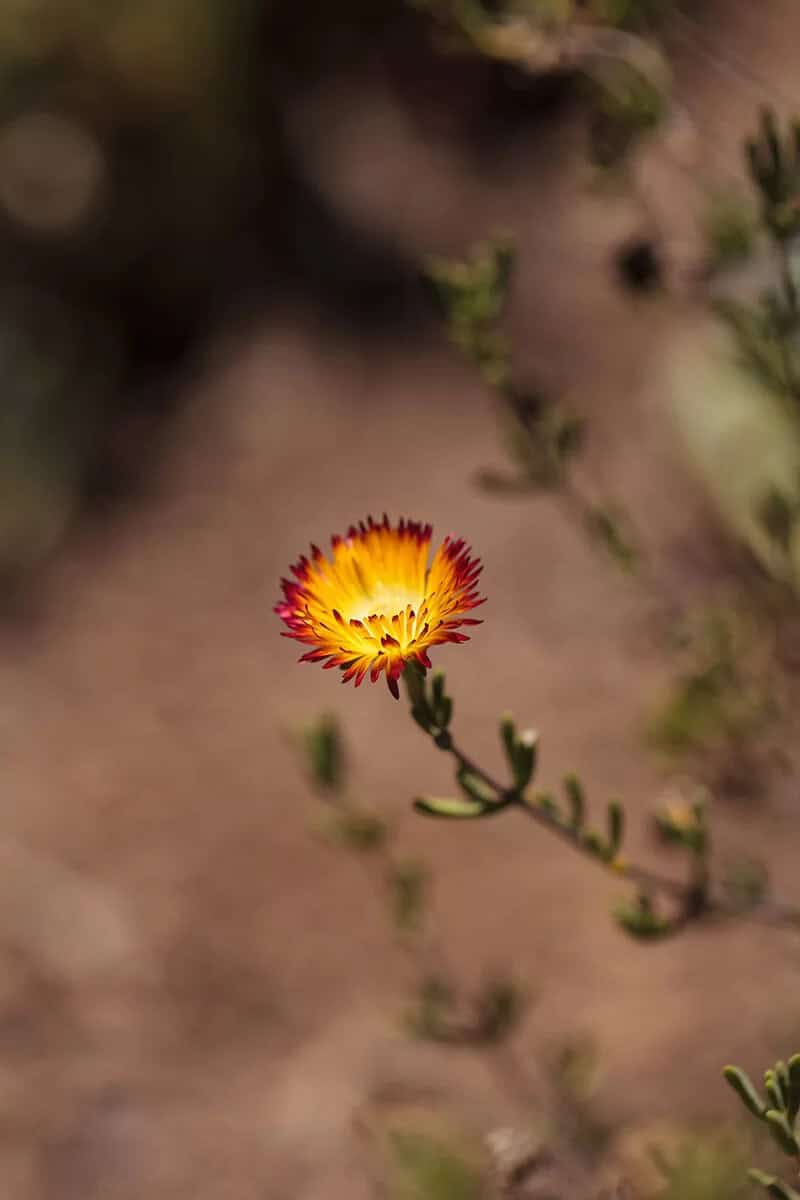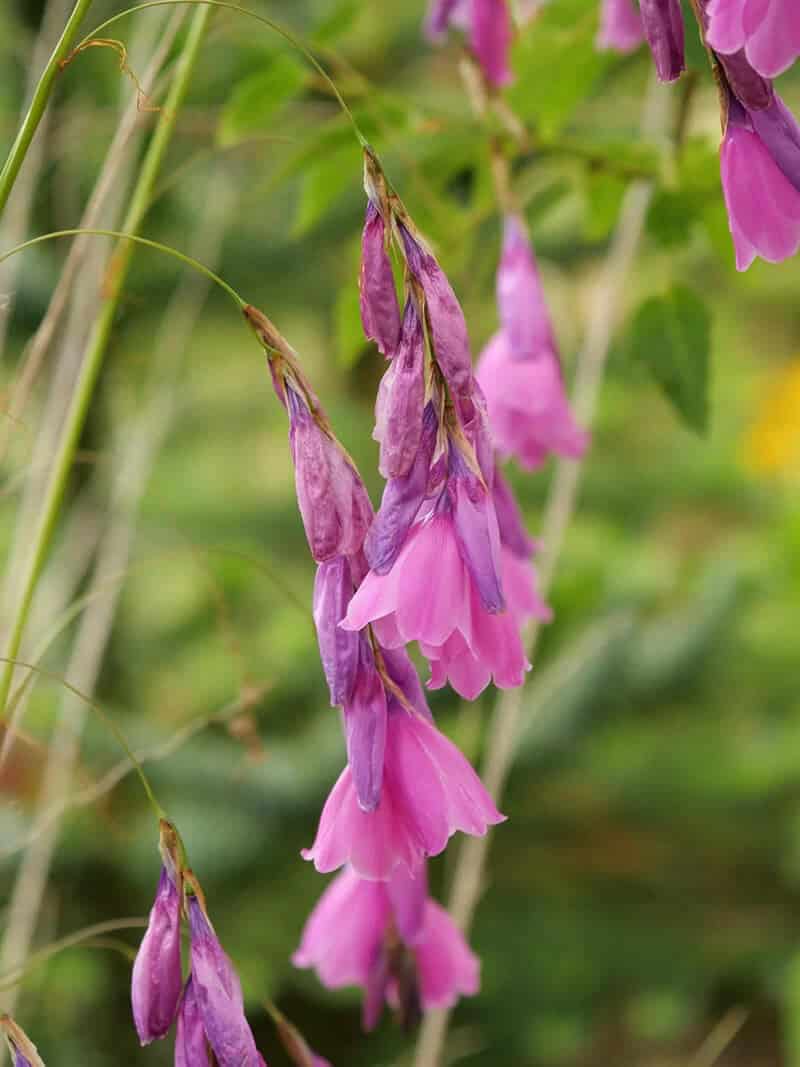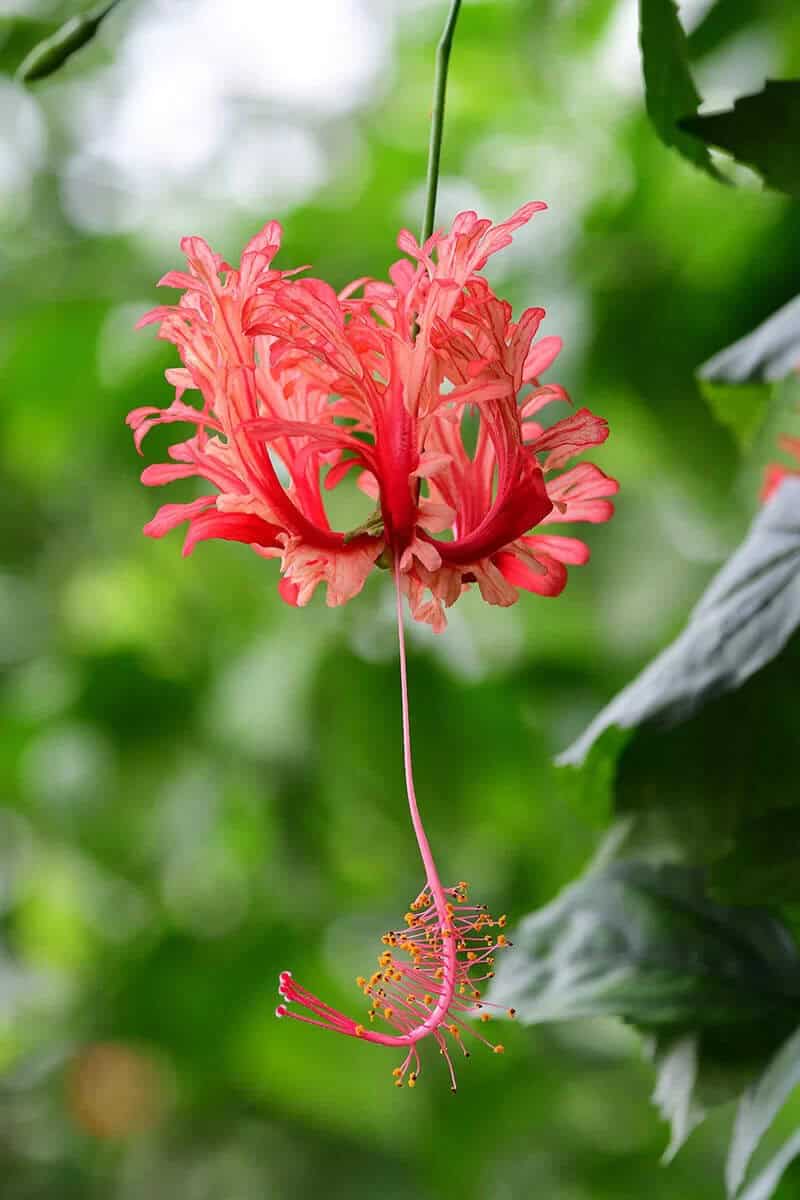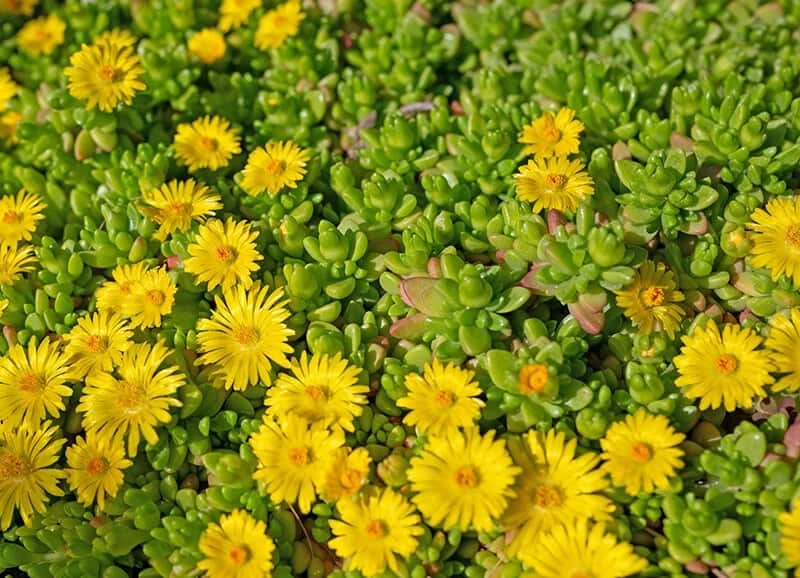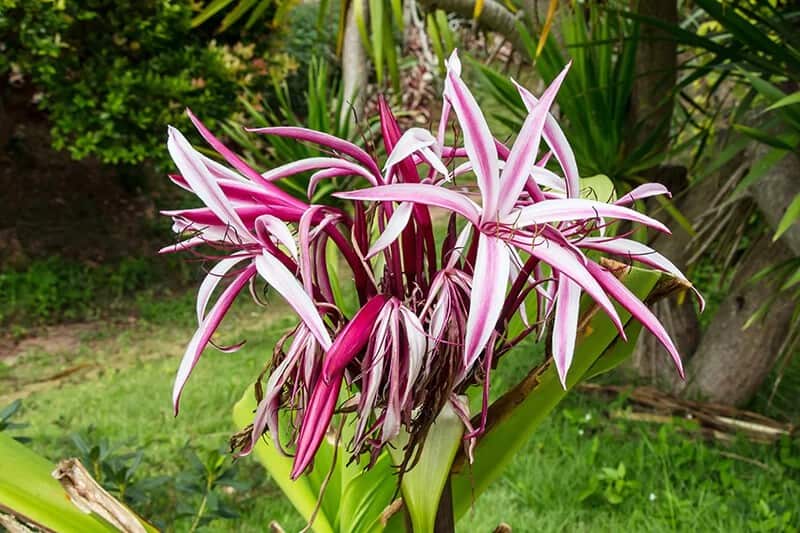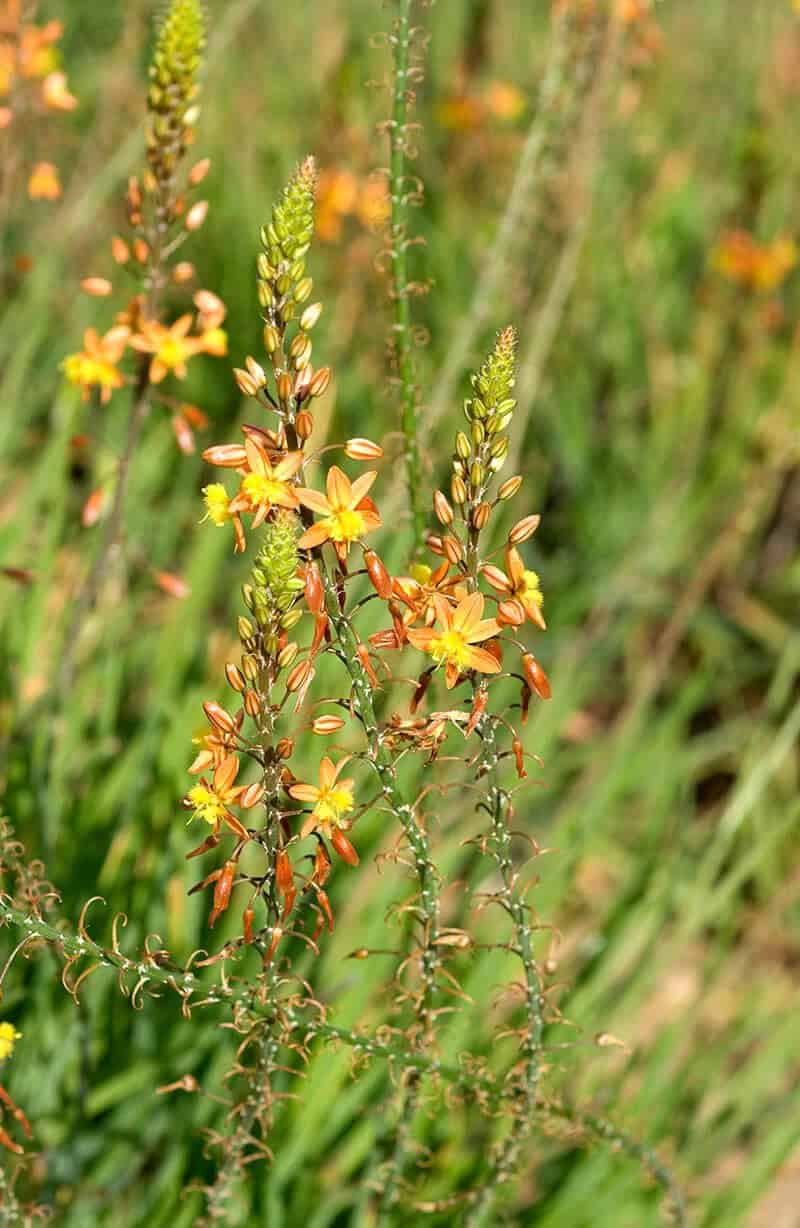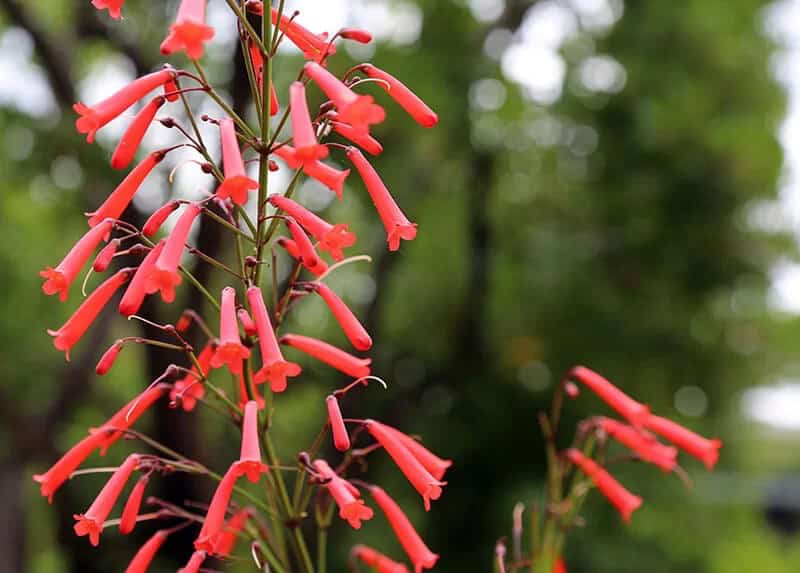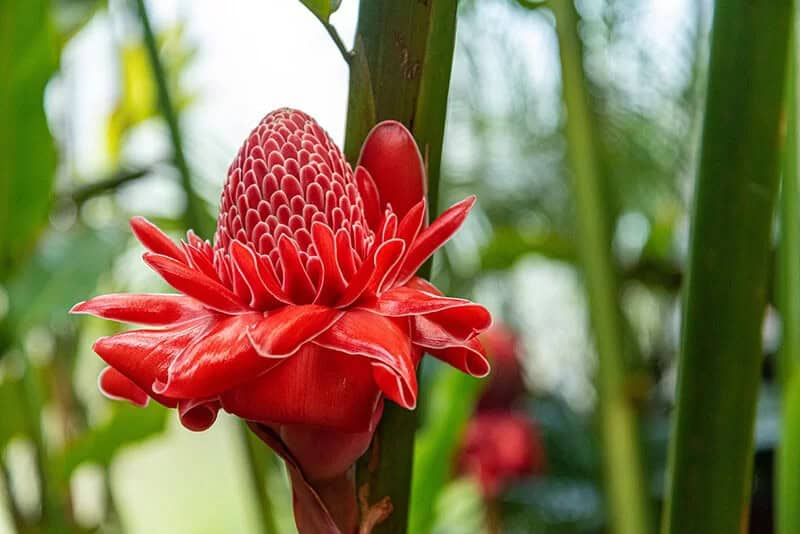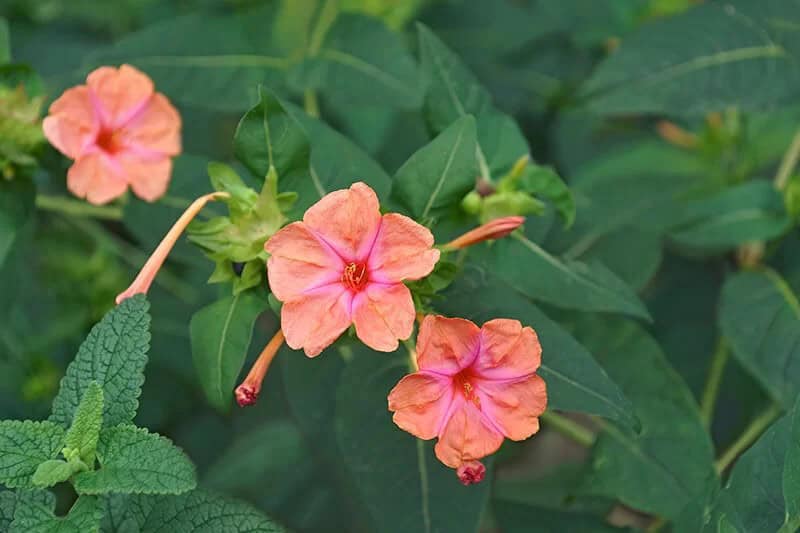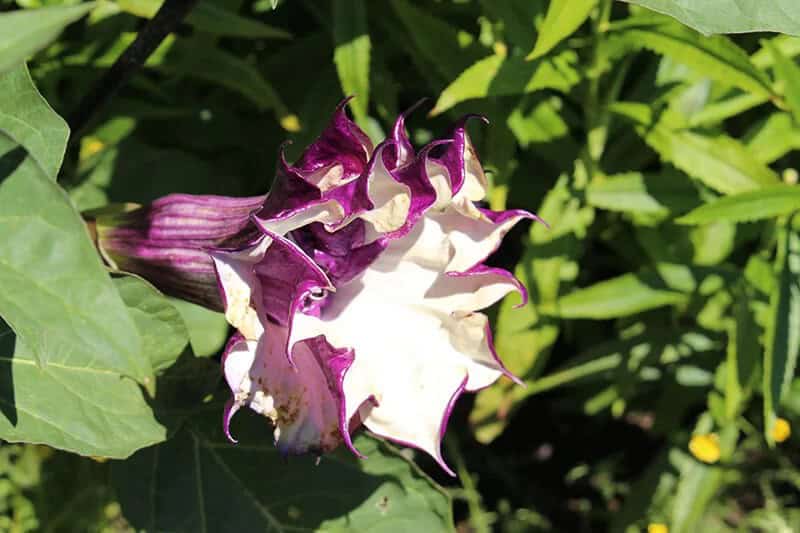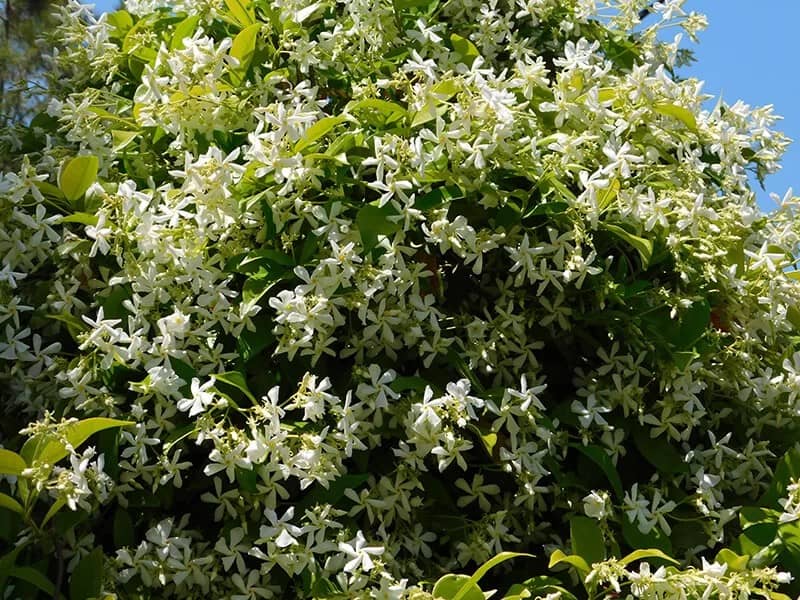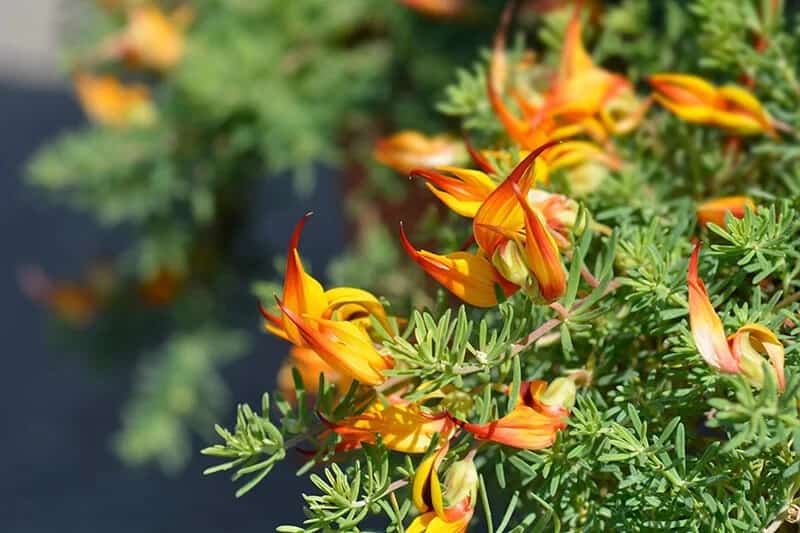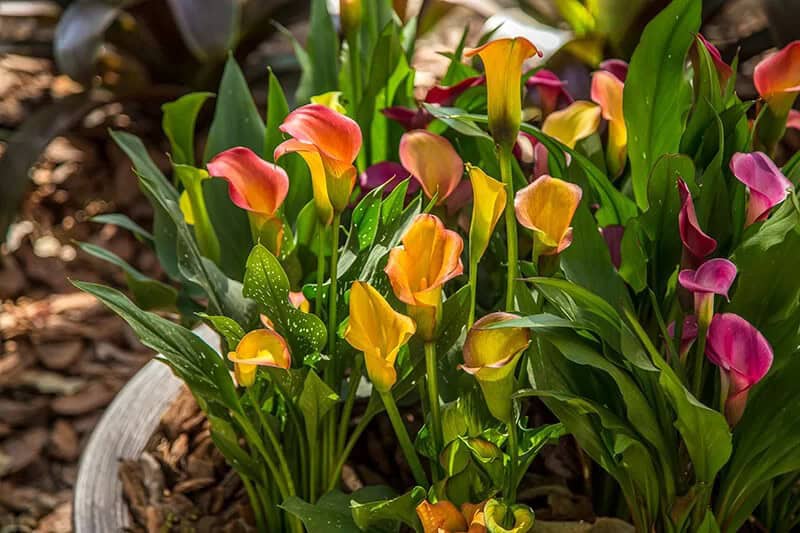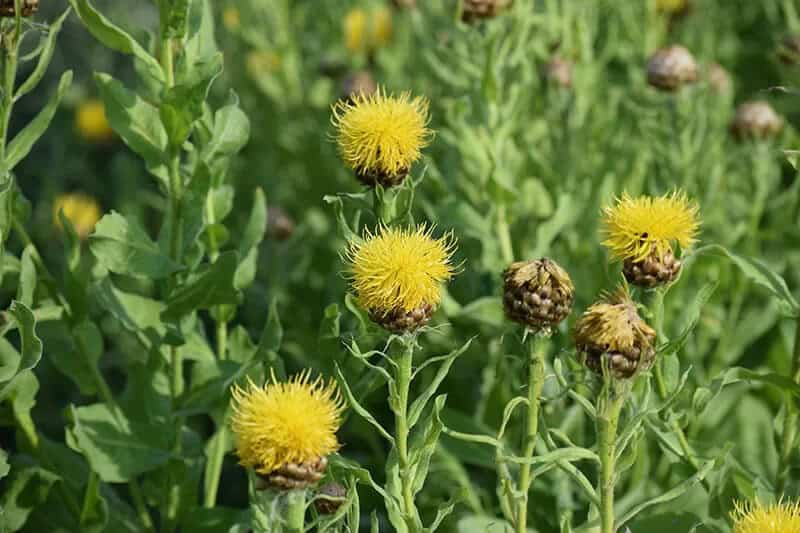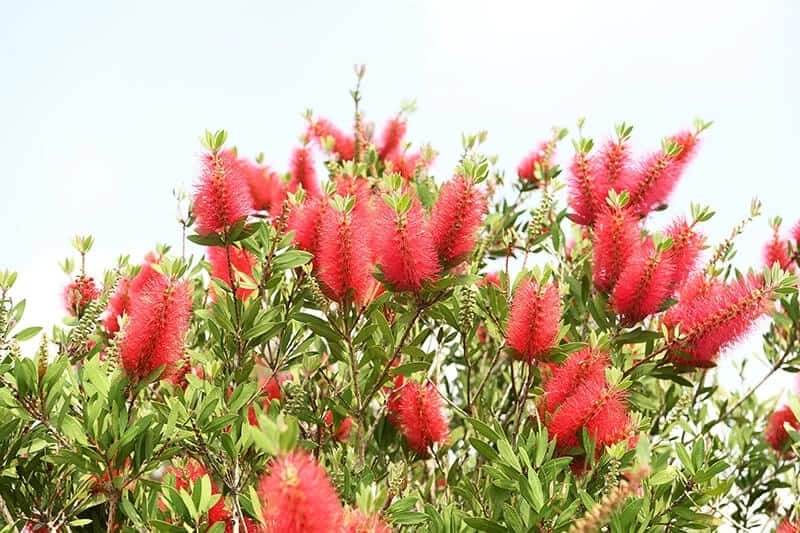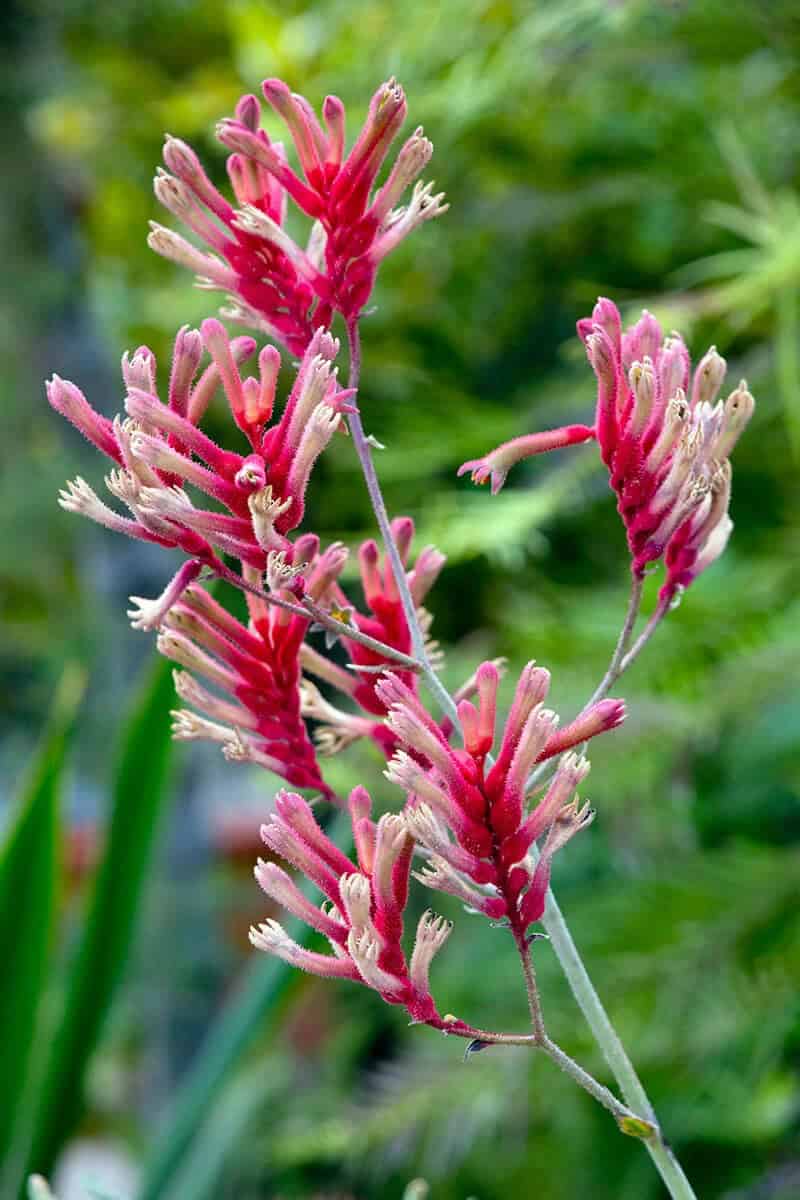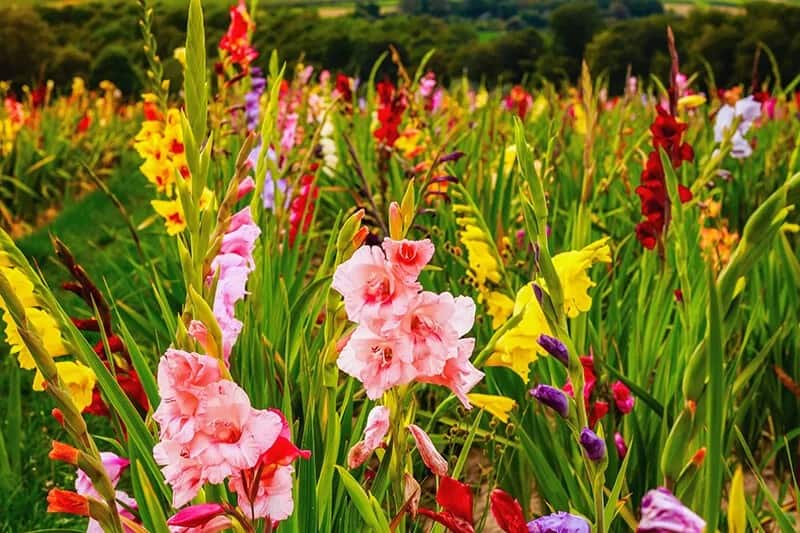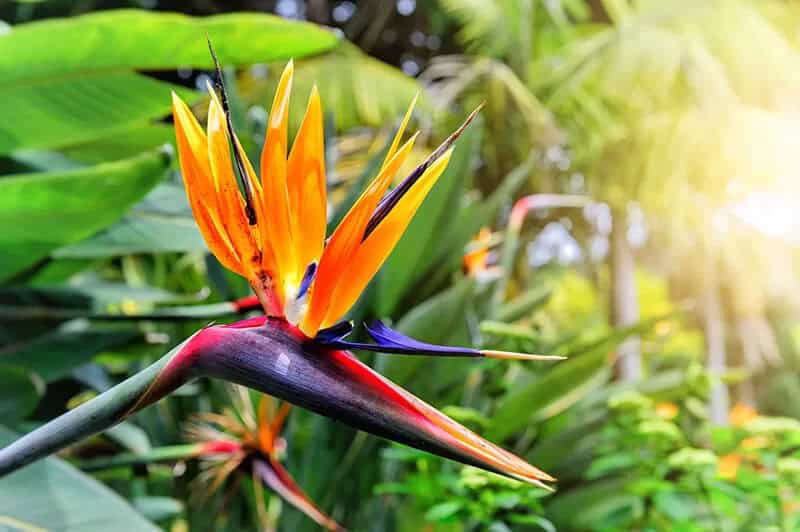Incorporating exotic flowers into your landscape design is a surefire way to add an air of cultural sophistication, biodiversity appreciation, and horticultural expertise. These showstoppers boast vibrant hues, intriguing foliage, and whimsical characteristics that can transport viewers to far-flung corners of the globe. By showcasing these botanical wonders, you’re not only celebrating the beauty of nature but also demonstrating your mastery over the art of gardening.
27 Extravagantly Exotic Flowers to Plant for a Landscape that will Help You Find Inner Peace
While many exotic flowers originate from the tropics, they’re not exclusive to those regions. In fact, several species can thrive in cooler climates when treated as warm-weather annuals. This means that even if you live in a temperate area, you can still enjoy these vibrant blooms by incorporating them into your garden or indoor spaces.
Peacock Flower (Dietes Bicolor)
The peacock flower, with its striking iris-like blooms, is a low-maintenance gem that thrives in well-drained soils and full sun to part shade. As its name suggests, this exotic South African native boasts vibrant spots on white petals, adding a pop of contrast to any landscape. With medium water needs and average soil preferences, the peacock flower is an excellent choice for gardeners seeking a showy yet easy-to-care-for addition to their outdoor spaces.
Its blooms appear from May to September, providing a delightful display throughout the growing season.
Crimson Flag (Schizostylis Coccinea)
The crimson flag, a striking exotic bloom, is a great addition to any landscape seeking vibrant pops of color in late fall. Its cup-shaped flowers can produce up to 14 stems each, showcasing their intense scarlet hue. Native to Zimbabwe’s marshes and riverbanks, this flowering beauty thrives in soils that retain moisture, such as sandy loam-type soils that tolerate poor drainage.
In full sun and with medium watering needs, the crimson flag blooms from August to October, bringing a touch of majesty and fun to any evening landscape. This stunning flower is well-suited for USDA growing zones 7 to 9.
Sacred Blue Lily of the Nile (Nymphaea Caerulea)
The symbolism behind water lilies is rooted in their association with long life, rejuvenation, and sensual pleasure. They thrive in environments that mimic the natural world, requiring a constant supply of wet soil and full sun to bloom from July to September. With growing zones ranging from 10 to 12, these aquatic plants can be easily integrated into your garden design. By incorporating water lilies, you can create a tranquil oasis that invites contemplation and relaxation.
Imagine sitting near one of these beautiful flowers, surrounded by their sweet fragrance, as the warm sun shines down upon you.
Cape Sundew (Drosera Capensis)

The enchanting Cape Sundew, with its tiny gemstone-like nectar drops, is a one-of-a-kind flower that will captivate any gardener. This carnivorous plant uses its sweet nectar to lure and trap unsuspecting insects, making it a fascinating addition to any exotic garden. As a demanding species, the Cape Sundew requires careful attention, but for experienced green thumbs, it’s an exciting challenge to cultivate.
The plant thrives in full sun, moist soil with good drainage, and can tolerate a wide range of soil conditions. In zones 7 to 9, you can expect blooms from May to September, adding a pop of color and serenity to your outdoor space.
Dewflower (Drosanthemum Micans)
The Dew Flower is a stunning succulent that boasts a unique combination of vibrant yellow and red hues in its striking blooms. Beyond its showy flowers, this plant also features eye-catching succulent foliage with a mesmerizing ability to catch the sunlight and emit a magical, glittering effect.
As if its visual appeal wasn’t enough, the Dew Flower is also an eco-friendly choice for those concerned about water conservation, requiring only dry to medium soil conditions and tolerating brief droughts. Its light-loving nature means it thrives in full sun environments, making it an ideal addition to zones 8-10. Whether grown indoors or outdoors, this succulent’s seasonal blooming habits ensure a constant display of its vibrant colors.
Angel’s Fishing Rods (Dierama Pendulum)
The majestic beauty of the exotic flower is characterized by its drooping stems, reminiscent of fishing rods. Each pendulous purple strand bears bell-shaped flowers that evoke a sense of celestial wonder. To unlock the full potential of these heavenly blooms in your landscape design, consider planting them adjacent to a water feature. The symbolic significance of this flower is multifaceted, representing relaxation, weddings, and appreciation for friends.
In terms of its growing requirements, it thrives in well-draining soil with full sun exposure and temperatures ranging from 7 to 9 on the growing zone scale. Watering needs are moderate, while blooming season typically spans June to August.
Hibiscus Lanterne (Hibiscus Schizopetalus)
The Hibiscus Lanterne, a stunning exotic flower, is perfect for adding drama to your landscape design. Its intricate pink-hued petals embody a harmonious balance of energy and romance, making it an ideal focal point in any floral arrangement. The drooping staminal column adds a touch of tropical elegance, elevating the overall aesthetic. This vibrant bloom thrives in zones 10-11, where it can bask in full sun.
A moderate water supply is sufficient, with fertile soil and good drainage being essential for optimal growth.
Hardy Yellow Iceplant (Delosperma Nubigenum)
The golden flowers of the hardy yellow iceplant are an unmistakable sight in any garden, persisting throughout the entire growing season. But that’s not all – the plant’s succulent foliage takes on a striking reddish hue during the fall months. As a mat-forming succulent, it’s perfectly suited to cover bare spots and add visual interest to your outdoor space.
With its adaptable nature, this plant thrives in conditions ranging from dry to moderately moist soil, tolerates drought, and can even survive in areas with full sun. Its golden blooms are especially striking when grown in zones 6 through 8, where it’s known to flourish.
Queensland Lily (Crinum)
The Queensland lily is a stunningly striped flower that can leave onlookers in awe, even when captured in photographs. A unique characteristic of this variety is its long memory; after being worked with once established, it may take several years for the plant to bloom again. For those living in zones 8-10, the opportunity to cultivate a thriving colony of these large-flowered lilies exists.
With medium water requirements and a preference for fertile soil with good drainage, these plants are relatively low-maintenance. In warmer climates, the Queensland lily can thrive under full sun to part shade conditions, with blooming typically occurring from July to August. Its impressive striped blooms make it an attractive addition to any garden or floral arrangement.
Cat’s Tail (Bulbine frutescens)
The vibrant orange blooms of this succulent groundcover are a treat to behold in late spring and early summer. To encourage continuous flowering, it’s essential to deadhead the spent flowers regularly. Beyond that, maintenance is minimal for these exotic beauties.
With its remarkable ability to flourish in dry conditions, this African flower is an excellent choice for water-conscious gardens. It thrives in average soil with good drainage and can even tolerate poor soils.
Additionally, it’s tolerant of drought, making it perfect for areas where water conservation is a priority.
This succulent requires full sun to bloom well, and its growth zones range from 9 to 11. With proper care, you can enjoy its stunning orange flowers from April to June.
Cape Fuchsia (Phygelius ‘Blacher’ Cherry Ripe)
The striking cherry-red blooms of the Cape Fuchsia are not only a stunning sight but also symbolize safety through life’s turbulent moments, friendliness, and abundance. This vibrant flower thrives in medium-water environments with fertile soil that drains well. Gardeners in USDA zones 7 to 10 will find this plant an ideal addition to their landscape. In terms of light, Cape Fuchsia prefers full sun to partial shade, allowing it to flourish from spring until autumn when its flowers bloom.
As a compact and low-growing species, it’s perfect for borders or containers. For those in cooler climates, these exotic beauties can be treated as annuals, adding an extra layer of charm to your garden.
Everlasting Flower (Helichrysum Bellum)
The everlasting flower, with its papery petals, is a popular choice among gardeners who enjoy creating dried arrangements. One of its unique characteristics is its ability to thrive in high-elevation gardens, much like its native habitat in Lesotho. This hardy bloom can tolerate gritty soil with good drainage and even poor soil conditions, making it an excellent option for areas with challenging terrain.
When it comes to growing conditions, the everlasting flower requires full sun, medium water levels, and a dry to medium climate. It’s most active during the blooming season of June to August, producing beautiful flowers that can be preserved for use in various arrangements.
Umzwatsi (Mackaya Bella)
The umzwatsi plant is steeped in symbolism, representing a fiery temper, stunning beauty, and gratitude. In terms of its care requirements, this evergreen shrub prefers medium water levels and thrives in fertile soil with good drainage. With growing zones ranging from 10 to 11, it can tolerate full sun to part shade conditions. The umzwatsi’s blooms typically occur between May and September, when delicate purple veins provide a striking contrast against lilac-to-white petals.
Its bushy growth habit makes it an excellent choice for use as a border or informal hedge, bringing an exotic touch to any garden setting. The plant’s unique features, including its floppy flowers and wavy-edged foliage, can add depth and visual interest to your outdoor space.
Philippine Waxflower (Etlingera Elatior)
The Philippine waxflower’s allure lies not only in its striking appearance but also in its symbolism. It embodies fiery passion, as well as the importance of being a good listener. This dainty yet resilient bloom is surprisingly vulnerable, adding an air of mystique to its already captivating charm.
When it comes to nurturing this exotic beauty, medium watering is sufficient, provided that the soil is fertile and drains well. In fact, consistently moist soil is ideal for optimal growth.
The Philippine waxflower thrives in warm climates with temperatures ranging from 10 to 12 growing zones. It requires full sun to partial shade, making it an excellent choice for gardens basking in the warmth.
What truly sets this flower apart, however, is its unique blooming season that spans all year long. For those living in areas with warm climates, the Philippine waxflower offers a thrilling opportunity to showcase one’s horticultural skills.
Marvel of Peru (Mirabilis Jalapa)
The mesmerizing marvel of Peru is a stunning flowering plant that boasts heart-shaped foliage and vibrant, multicolored blooms. Its beauty is not limited to its visual appeal, as it has adapted to thrive in a variety of environments. With the ability to tolerate boggy conditions, average soil with good drainage, and even tolerating a wide range of soil types, this plant can be grown in zones 9 to 11.
It requires medium watering and can bloom from June until frost, often producing dappled patterns on its flowers. When placed in full sun to part shade, the marvel of Peru can bring tropical colors to any space, making it a perfect addition to a rain garden or other outdoor area.
Star of Persia (Allium Cristophii)
The Star of Persia, with its unique, spherical cluster of star-shaped flowers, is a mesmerizing addition to any garden. Native to the ancient Persian Empire, this striking bloom is made up of 100 individual flowers that seem to float above the landscape on slender stems. The flowers themselves are approximately 12 inches in diameter and possess a symbolically rich meaning: they represent long life, spicy personality, and artistic creativity.
For optimal growth, the Star of Persia requires dry to medium watering conditions, tolerating drought but doing best with moderate moisture levels. It thrives in sandy soil with excellent drainage, making it an ideal choice for gardeners who prefer well-draining soil. The plant’s hardiness zone is 4 to 8, and it flourishes in full sun, blooming seasonally from May onwards. When paired with fluffy, cloud-like wildflowers, the Star of Persia creates a truly magical effect that is sure to delight.
Falling Stars (Crocosmia ‘Emberglow’)
Falling stars, a South African flower renowned for their striking beauty, are often used in commercial floral arrangements to add drama and flair. Their bright orange blooms can elevate any space, and when grouped together, they create a stunning visual effect. The ‘Emberglow’ variety stands out with its burnt orange hue, reminiscent of a fiery ember. These flowers thrive in well-draining fertile soil, full sun to part shade, and are ideal for growing zones 5 to 9.
They require moderate watering and bloom from July to August, making them an attractive addition to any garden or arrangement.
Devil’s Trumpet (Datura Metel)
Beyond its mischievous moniker, the devil’s trumpet offers a wealth of benefits to any landscape design. Its intoxicating aroma fills the air, drawing in pollinators and tantalizing the senses. With four distinct colors and multiple bi-color patterns to choose from, this exotic flower brings a kaleidoscope of visual and olfactory interest to any garden.
Its medium water requirements make it accessible to a wide range of growers, while its need for fertile loam-type soil with good drainage ensures that it thrives in well-cared-for environments. Best suited for zones 9-10, this full-sun loving bloom can be enjoyed from July until the first frosts, making it an excellent choice for those looking to add a touch of whimsy and wonder to their outdoor spaces.
Jasmine (Jasminum officinale)
Jasmine, an exotic flower species, exudes celestial joy, feminine sweetness, and cheerful friendliness through its symbolism. Despite being invisible in photographs, its alluring fragrance is renowned for filling landscapes with its sweet scent. A single jasmine plant can be sufficient to create a charming ambiance with its blooming white flowers, which last throughout the spring and summer seasons.
While it requires medium watering, average soil with good drainage, and full sun to part shade, jasmine thrives in growing zones 7 to 10. Its blooms appear from April to September, providing a delightful visual treat for garden enthusiasts.
Firecracker Flower (Crossandra infundibuliformis)
In the realm of symbolism, the firecracker flower is steeped in meaning. Its glossy leaves and delicate flowers evoke images of good hair days, spiritual guidance, and masculine handsomeness. This enchanting bloom holds a special place in Sri Lankan and Indian cultures, where it thrives in medium water conditions. With its light-textured fertile soil and good drainage requirements, the firecracker flower is well-suited for growing zones 10 to 11.
While it does require partial shade, the payoff comes in the form of freely blooming flowers that add a pop of color to even the most mundane spaces. As a groundcover, it’s perfect for bringing life and vibrancy to shady areas of your garden, producing stunning apricot and salmon-hued blooms throughout the year.
Parrot’s Beak (Lotus berthelotii)
The Parrot’s Beak flower, with its distinctive beak-shaped blooms, is not only a striking addition to any garden but also holds symbolic significance for loving marriages, mysterious wisdom, and spiritual truth. For optimal growth, this vining plant requires medium watering, average soil with excellent drainage, and prefers light-textured soil.
Gardeners in USDA zones 10 to 12 are fortunate enough to be able to cultivate Parrot’s Beak as a perennial, while those in colder climates can still appreciate the cool gray-green foliage and vibrant flowers during the warm-weather annual growing season from May to July. When grown in full sun, this exotic flower is sure to be a standout feature of any outdoor space.
Calla Lily (Zantedeschia Rehmannii)
In the world of gardening, few flowers evoke the same sense of elegance and sophistication as the calla lily. With its striking pink blooms, this variety is a standout among the usual suspects. But what makes it truly unique is its exotic origins – hailing from South Africa’s lush landscape. Native to this vibrant continent, the calla lily has adapted to thrive in more temperate climates, making it an ideal addition to any bulb garden or cut flower arrangement.
As a medium-watered plant with average soil needs and full sun to part shade, it’s surprisingly easy to cultivate. And if you’re lucky enough to live in USDA zones 8-10, you can enjoy its beautiful blooms from July to September.
Sensitive Neptunia (Neptunia Oleracea)
While they may initially appear unassuming, sensitive neptunia’s unique characteristics make it a valuable addition to any landscape. The plant’s delicate, puffball-shaped flowers are accompanied by leaves that have a fascinating adaptation – they curl up when touched, similar to its relative the sensitive mimosa. Sensitive neptunia thrives in aquatic environments and can quickly spread to transform even the most mundane water features into vibrant oases.
In ideal conditions of full sun to partial shade, this plant blooms from June to September, providing a burst of color during the warmest months.
Stiff Bottlebrush (Callistemon Rigidus)
The vibrant Australian shrub, characterized by its exotic red flowers, brings an air of mystique to any landscape design. With its striking blooms, this versatile plant can be showcased as a standalone specimen or used to create a stunning hedge. For gardeners residing in frost-free climates, the pleasure of admiring these crimson flower sprays is available year-round, with peak blooming occurring from June to August.
The shrub’s symbolism is rooted in themes of sensual pleasure, male virility, and fertility, while its growing requirements include medium water needs, fertile soil with good drainage, a USDA hardiness zone ranging from 9 to 10, and full sun exposure.
Tall Kangaroo Paw (Anigozanthos Flavidus
The tall kangaroo paw plant is a striking addition to any landscape, offering a unique blend of rugged charm and beauty. Its symbolic significance includes abundance, an open heart, and happiness – making it the perfect choice for those looking to bring a touch of adventure into their outdoor spaces.
To thrive, this herbaceous perennial requires medium watering, average soils with good drainage, and a growing zone between 9 and 11.
It also needs full sun to part shade, making it suitable for gardens that receive varying levels of sunlight throughout the day.
One of the standout features of the tall kangaroo paw is its impressive height, reaching up to 72 inches tall. This makes it an ideal choice for creating a dramatic focal point in any garden or landscape design. Additionally, the plant’s flowers come in a range of colors, including reddish-pink and green with black hues – offering something for every taste.
Gladiolus (Gladiolus)
Gladiolus flowers are truly showstoppers, boasting vibrant colors and striking appearances that captivate any landscape. Native to South Africa, these stunning blooms bring an exotic touch to garden beds and borders. To prolong the blooming season and maintain a kaleidoscope of color, plant gladiolus corms at two-week intervals, allowing for a continuous display of beauty.
Bird of Paradise (Strelitzia Reginae)
The bird of paradise flower is an iconic and striking bloom that embodies regal gravitas, fidelity, and magnificent beauty. It thrives in medium water conditions and tolerates drought, making it a reliable choice for gardeners. Fertile loam-type soils with good drainage are ideal, although the plant can adapt to a wide range of soil types. Gardeners in USDA growing zones 10 to 12 will find this flower an excellent addition to their landscape.
When it comes to light, bird of paradise blooms require full sun to part shade, allowing you to place them in a spot that suits your climate and aesthetic. As a seasonal bloomer, the flower’s vibrant colors and unique architecture make it a showstopper during its peak bloom period.
27 Exhilarating Exotic Flowers to Plant for a Breath of Botanical Fresh Air
When incorporating exotic flowers into your landscape design, it’s essential to consider their unique qualities. Like evergreen trees, these blooms can revitalize a space that feels tired or stale. The vibrant colors and sculptural shapes of certain flowers are perfect for sparking conversations. If you’re unsure where to begin, simply choose the plants that resonate with you on a personal level.
Alternatively, consider showcasing the beauty of a specific region, such as Australia, Africa, or South America, in your garden. This experimental approach can be a thrilling adventure, allowing you to discover new flowers and refine your understanding of your botanical style.
